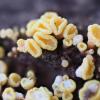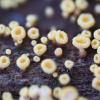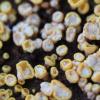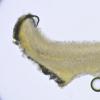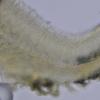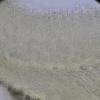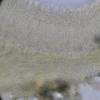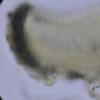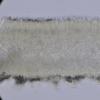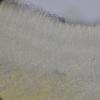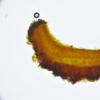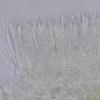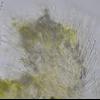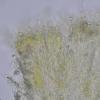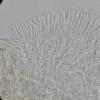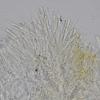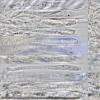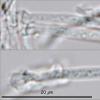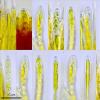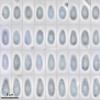
24-12-2025 17:08
Hulda Caroline HolteHello, I have found this propoloid ascomycete on

21-12-2025 09:32
Hello.A tiny ascomycete found embedded in wood in

21-12-2025 21:32
Pol DebaenstHello, Garden, Burgweg 19, Veurne, BelgiumOn 10/1

22-12-2025 23:38
Patrice TANCHAUDBonsoir, récolte sur un mur en pierre, apothéci

22-12-2025 00:47
Patrice TANCHAUDBonsoir, récolte à proximité du milieu dunaire
 Good morning
Good morningThis small (about 1 mm wide), stalked, sulphurous yellow species was growing on Laurus novocanariensis wood. Many apothecia had the hymenium covered with a whitish mass.
The asci were not in very good condition, but are octospotic, with croziers, IKI + and I think Hymenoscyphus or Sclerotinia type apical ring, measuring (40.2) 40.5 - 50.8 (55.4) × (3.3) 3.5 - 4.5 (5.1) µm; N = 29; Me = 46.6 × 4 µm ; Qe = 11.7 in dead state.
The ascospores are tear-shaped, without LBs, (3.5) 3.9 - 5.3 (6.6) × (1.7) 1.9 - 2.4 (2.7) µm; Q = (1.5) 1.8 - 2.6 (3.1) ; N = 67; Me = 4.6 × 2.1 µm ; Qe = 2.1.
The paraphyses are cylindrical, slightly pointed at the apex, but not lanceolate.
The ectal exciple has textura prismatica and the medullary one has textura intricata. All the apo turns red-brown with IKI.
The hairs are finely rough, slightly widened and without crystals at the apex. The margin and the exterior are covered by an abundant resinous mass of yellowish sulfur color.
With this information, going through all the genera of Lachnaceae family, I came to the genus Lachnellula, but I did not find any similar species, more than L. resinaria.
Thank you very much in advance.
Miguel Ángel Ribes.
